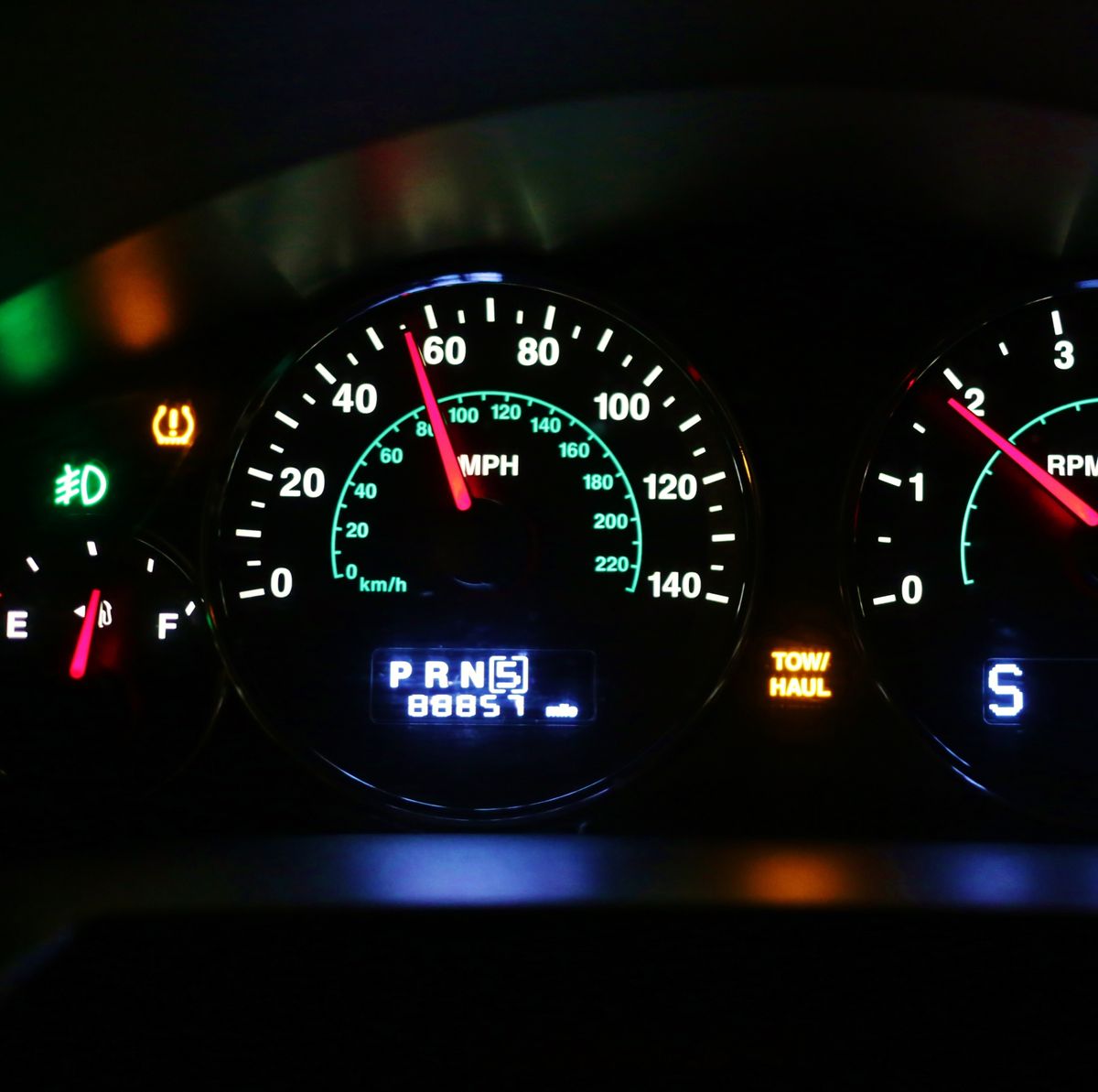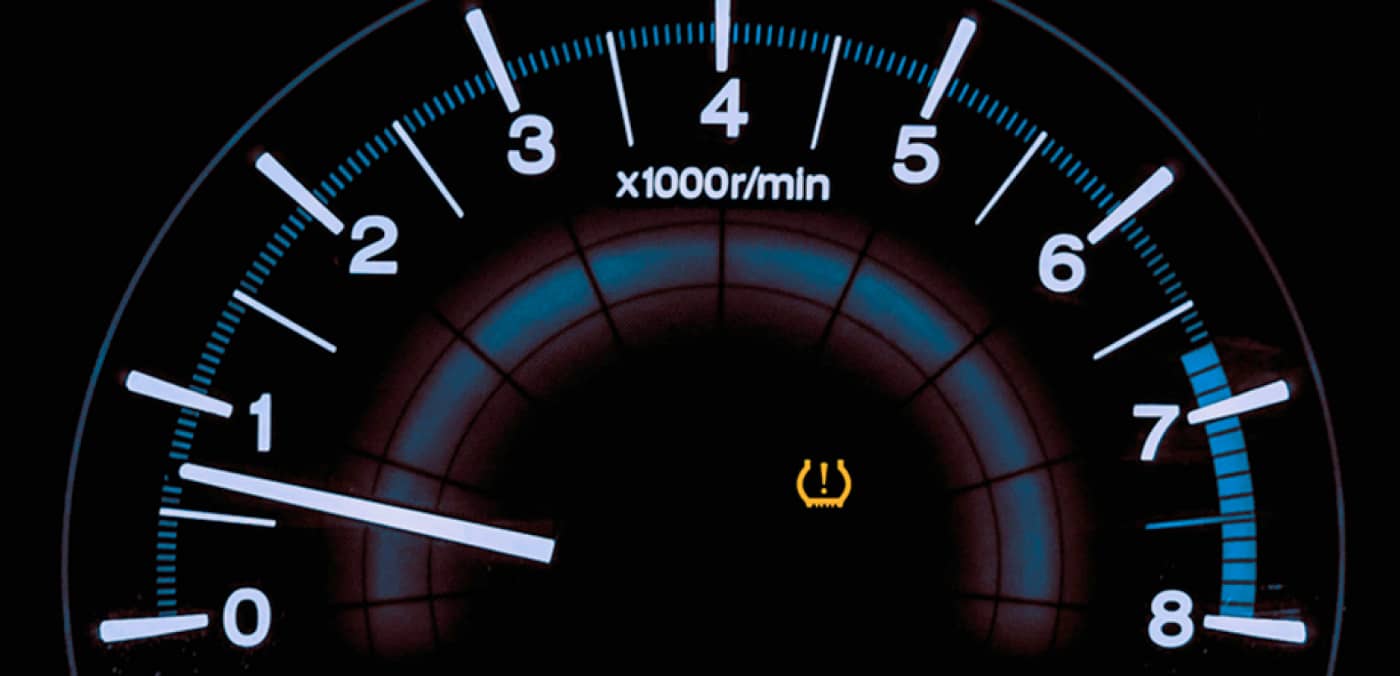What Causes the Tire Pressure Gauge Light to Come on
The tire pressure gauge light comes on when the tire pressure is too low or too high. When your vehicle’s tire pressure is outside of the recommended range, the tire pressure gauge light will illuminate on the dashboard.
This warning light serves as an indication that there may be an issue with the tire pressure. Inadequate tire pressure can lead to reduced handling, decreased fuel efficiency, and increased risk of tire failure. On the other hand, overinflated tires can cause uneven tread wear and reduce traction, compromising the safety and performance of the vehicle.
Therefore, it is crucial to maintain the proper tire pressure to ensure optimal driving conditions and extend the lifespan of your tires. We will explore the various causes of the tire pressure gauge light coming on and discuss the necessary steps to rectify the issue.

Credit: www.caranddriver.com
Common Reasons
The tire pressure gauge light is a crucial indicator on your car’s dashboard that warns you of potential problems with your tires. When this light comes on, it’s important to address the issue promptly to ensure your safety on the road. There are several common reasons why the tire pressure gauge light may illuminate, including underinflated tires and overinflated tires.
Underinflated Tires
Underinflated tires are a leading cause of the tire pressure gauge light coming on in vehicles. When your tire pressure is below the manufacturer-recommended levels, it can negatively impact your car’s performance and fuel efficiency. Additionally, underinflated tires can cause uneven tread wear, reduced traction, and poor handling, increasing the risk of accidents.
If your tire pressure gauge light is on and you suspect underinflation, don’t ignore it. Check your tire pressure using a pressure gauge or visit a nearby gas station with air pumps. Make sure to follow the recommended pressure levels specified by your vehicle’s manufacturer, which can usually be found in the owner’s manual or on a sticker located on the driver’s door jamb or inside the glove compartment.
Overinflated Tires
Overinflated tires are another common reason for the tire pressure gauge light to come on. When the air pressure in your tires exceeds the recommended levels, it can lead to a harsher ride, decreased traction, and increased vulnerability to damage from road hazards. Overinflation can also cause the tire’s center tread to wear out faster than the outer edges, making it essential to maintain the correct tire pressure.
If you suspect overinflation as the cause of the tire pressure gauge light, simply release some air until you reach the optimal pressure level recommended by the manufacturer. Ensure you have a reliable tire pressure gauge to accurately measure the pressure and avoid under or overinflation. Regularly checking your tire pressure, ideally once a month, can help prevent overinflation and underinflation issues.

Credit: www.bridgestonetire.com
Issues With The System
The tire pressure gauge light can come on due to issues like low tire pressure, leaks, or faulty sensors. Regularly checking and maintaining tire pressure can help prevent this common problem. It is essential to address it promptly to ensure safe driving and prevent potential damage.
Faulty Sensor
When it comes to the tire pressure gauge light coming on, one of the possible issues with the system is a faulty sensor. The tire pressure monitoring system (TPMS) relies on sensors in each tire to detect the pressure levels. If one or more of these sensors malfunction, it can trigger the tire pressure gauge light to illuminate. A faulty sensor may provide inaccurate readings or fail to detect pressure changes altogether. This can lead to potential safety hazards, as driving with incorrect tire pressure can affect the vehicle’s handling and fuel efficiency.Electrical Problems
Another common issue that can cause the tire pressure gauge light to come on is electrical problems within the system. The TPMS relies on electrical signals to communicate with the vehicle’s onboard computer. If there are any problems with the electrical connections or wiring, the system may not function properly. Loose or corroded connections, damaged wiring, or faulty control modules can all contribute to electrical issues that trigger the tire pressure gauge light. It’s important to address these problems promptly to ensure accurate tire pressure monitoring and maintain optimal driving conditions.Environmental Factors
The tire pressure gauge light can come on due to environmental factors such as changes in temperature and altitude. These factors can cause fluctuations in tire pressure, triggering the light to alert the driver to check their tire pressure.
Temperature changes and altitude changes can impact your tire pressure gauge light.Temperature Changes
In colder temperatures, tire pressure tends to decrease.Altitude Changes
Changing altitudes can cause fluctuations in tire pressure readings.Maintenance And Care
The tire pressure gauge light on your vehicle’s dashboard can come on due to various reasons, such as low tire pressure, a punctured tire, or a malfunctioning sensor. Regular maintenance and care, such as checking and inflating the tires as needed, can help prevent this issue and ensure optimal performance.
Maintaining and caring for your vehicle’s tires is essential for safety and performance. Understanding the causes of the tire pressure gauge light coming on can help you prevent potential issues. Here’s how you can ensure proper maintenance and care for your tires. “`htmlProper Tire Care
“` Proper tire care involves regular maintenance and attention to detail. Here are some essential steps to keep your tires in top condition: – Check Tire Pressure: Regularly inspect and maintain proper tire pressure according to the manufacturer’s recommendations. Inadequate tire pressure can trigger the gauge light. – Schedule Rotations: Arrange for periodic tire rotations to distribute wear evenly and extend tire life. Rotations also help prevent irregular tread wear, which can impact pressure levels. – Alignment Checks: Ensure that your vehicle’s wheels are properly aligned to prevent uneven tire wear, which could lead to pressure issues and an illuminated dashboard light. “`htmlRegular Inspections
“` Frequent inspections are crucial for identifying and addressing potential tire-related problems. Consider the following inspection tips: – Visual Checks: Routinely inspect your tires for any signs of damage, such as cuts, bulges, or punctures. Addressing these issues promptly can prevent pressure irregularities. – Tread Depth Examination: Monitor the tread depth and look for signs of uneven wear. Proper tread depth is vital for maintaining optimal pressure levels. – Valve Stem Assessment: Ensure the valve stems are intact and not damaged to prevent air leakage, which can trigger the tire pressure gauge light. Regular and thorough maintenance can effectively prevent the tire pressure gauge light from coming on, ensuring the safety and reliability of your vehicle.Importance Of Proper Tire Pressure
Proper tire pressure is crucial for the safety and performance of your vehicle. Not only does it ensure a smooth and comfortable ride, but it also plays a significant role in preserving the longevity of your tires. In addition, maintaining the correct tire pressure can positively impact fuel efficiency and contribute to a safer driving experience.
Safety Concerns
The safety implications of improper tire pressure cannot be overstated. Underinflated tires are more prone to overheating and may lead to tire blowouts, increasing the risk of accidents and collisions. Similarly, overinflated tires reduce the contact patch with the road, compromising traction and handling, especially in wet or slippery conditions.
Fuel Efficiency
Proper tire pressure directly impacts fuel efficiency. Underinflated tires increase rolling resistance, requiring more energy and fuel to propel the vehicle forward. On the other hand, overinflated tires can lead to reduced fuel efficiency due to decreased traction and increased wear on the tread.

Credit: www.bridgestonetire.com
Frequently Asked Questions For What Causes The Tire Pressure Gauge Light To Come On
Why Is My Tire Pressure Light On If My Tires Are Fine?
The tire pressure light may be on due to a faulty sensor or system error not related to tire pressure.
Is It Ok To Drive With Tire Pressure Light On?
Driving with the tire pressure light on is not safe. Low tire pressure can affect handling and traction. It is important to check and inflate the tires to the recommended pressure before driving. Ignoring the light could lead to tire damage and unsafe driving conditions.
Can The Tire Pressure Light Mean Something Else?
Yes, the tire pressure light can also indicate a faulty sensor or a problem with the vehicle’s anti-lock braking system (ABS). It’s important to have the system checked for any other issues. Regular maintenance can prevent potential problems.
What Causes Check Tire Pressure Light To Come On?
Low tire pressure triggers the sensor to illuminate the check tire pressure light on the dashboard.
Conclusion
Keeping an eye on your tire pressure is crucial for safety and performance. Understanding the causes of the tire pressure gauge light coming on will help you maintain your vehicle properly. Regular check-ups and prompt action will ensure a smooth and safe driving experience.
Stay informed and stay safe on the road.
